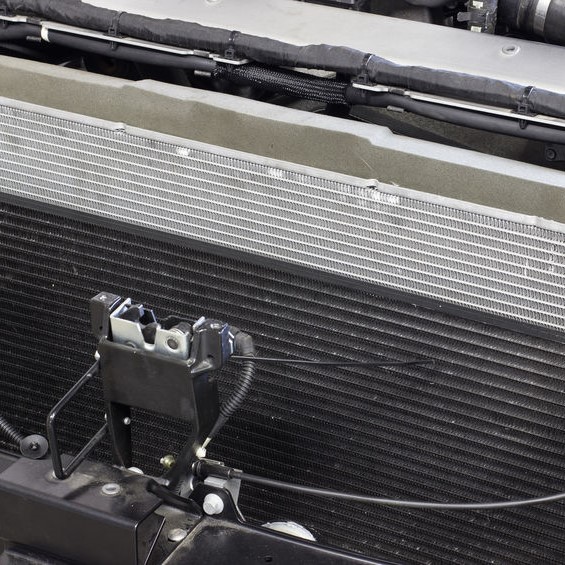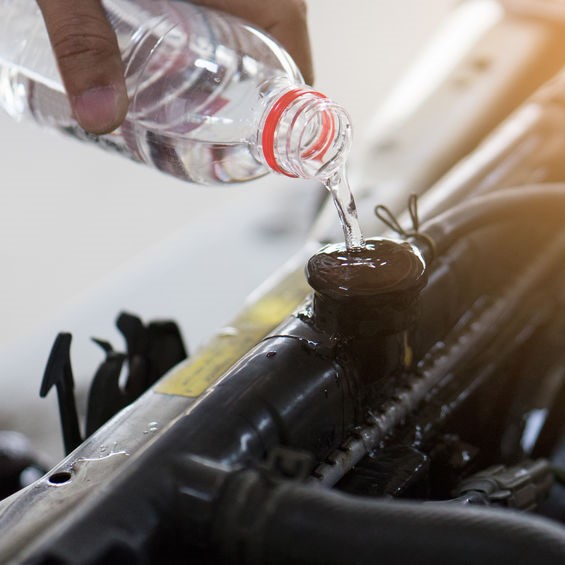
Flushing your radiator
What is a radiator flush? A radiator flush is like a blood transfusion for your car’s cooling system. A technician will flush several gallons of radiator cleaner and water through your car’s cooling system. This gets all the old antifreeze and any contaminants out, then new antifreeze is added into the system. Why? What does a radiator flush do for your car?
To keep your car in prime running condition, there are several routine services you should have performed:
- Change the oil and oil filter – monthly or by recommended mileage
- Check the tire pressure – every time you get gas
- Check all the fluids under the hood – at every oil change
- Check the belts and hoses – at every oil change
- Check the wiper blades – at every oil change
- Change the air filter – inspect at every oil change
- Check the battery – at every oil change
- Have the radiator flushed
Each of the things listed here should be done on a monthly basis. Checking each of these things allows your mechanic and you to catch any potential problems, will keep your car running at its best performance, and extend your cars lifespan, including a radiator flush.
Do you really need to flush your radiator?
You may have a general idea what your car’s radiator does, but do you realize how important it is to the rest of the engine or transmission? You should flush a radiator regularly to keep the cooling system in prime operating condition.
A radiator flush removes dirt, rust, contaminants, or particles that can clog the radiator or the entire cooling system. When these things are in the radiator, it isn’t able to cool the engine and it should and can get stopped up and overheat. An overheated engine can crack the block, the head, burn up the transmission, and more.
The coolant that is left in the radiator keeps the engine cool with water mixed coolant, keeping it from corroding with rust and scale. When this is allowed to happen, more than just the radiator becomes clogged. The water pump stops up, the water jackets stop up, and the heater core becomes clogged.
What does it cost to flush a radiator?
A radiator flush cost can vary from region to region and depends on the model of the car. For example, a 1980 model Chevy won’t cost as much as 2020 BMW, but that isn’t the focus you should have. A radiator flush will save you hundreds, even thousands of dollars by keeping your engine and the cooling system clean of debris and rust.
The typical cost of a radiator flush can start around $50 and can cost upward of $150 or more. This price will include as many as four gallons of specialized coolant, a cleaner, and a conditioner.
Can a radiator flush cause problems?
Yes and no. Yes, because a radiator flush is going to flush out any corrosion, debris, rust, and other contaminants. If the flush isn’t thoroughly to clear all of that out, it can loosen up those things which could clog up the cooling system, including the radiator. No, a radiator flush won’t cause problems if it is done correctly and flushes everything out as it is intended, then your car will run the same or better.
How do you know when to radiator flush your car?
If you have your car in for an oil change and the technician comes out to the lobby to tell you that your car needs a radiator flush, how do they know that? Well, they look have been trained to know when radiators look corroded, dirty, and rusty. How can you tell if your car needs a radiator flush?
- Green or orange fluid is coming out from under your car
- Engine has a grinding sound
- The heat gauge is showing the car running hotter than usual after you start it
- There is steam coming out from under the hood
- Your car smells like hot maple-syrup under the hood

Can I do a coolant flush myself?
Maybe you’re a DIY kind of person, or maybe you need a radiator flush but don’t have the $50 or so to spare. The following steps will walk you through how to do radiator flush yourself:
Open the radiator cap (if the car has been running, let the engine cool down before attempting this).
Using the owner’s manual or a YouTube video, find the radiator drain and place a container that can hold several gallons of fluid under the car. This will need to hold the antifreeze/water that drains out plus the flush you’ll be adding.
Open the drain and if there isn’t anything clogging up the radiator, gravity should do its thing and force all the antifreeze/water to flow out and into the container you placed under the car.
Pour the radiator flush in as directed on the package and then add water up to an inch under the radiator opening.
Close the drain cap and the radiator cap, then start the car with the heater set at full blast, let it run like this for amount of time recommended on the flush product’s package.
Kill the engine and allow it to cool down, then repeat drain process and refill, and repeat the entire process again.
Drain again, then add the antifreeze this time.
After you are done this time, clean the area thoroughly, diluting and rinse away any antifreeze that may have spilled out. Take a shower and change your clothes.
If you choose to do your own radiator flush, remember that antifreeze is sweet smelling and can attract children and animals. It is important to get the area cleaned and free of any antifreeze, old or new, so that it isn’t a danger.
This is the upside to having a radiator flush by a professional technician. They have the equipment and process that keeps these fluids that are necessary for a car out of the reach of children and animals. They also have a process that keeps it out of the environment to keep nature’s system safe. Call 805-466-3236 today for your radiator flush in Atascadero, CA.
